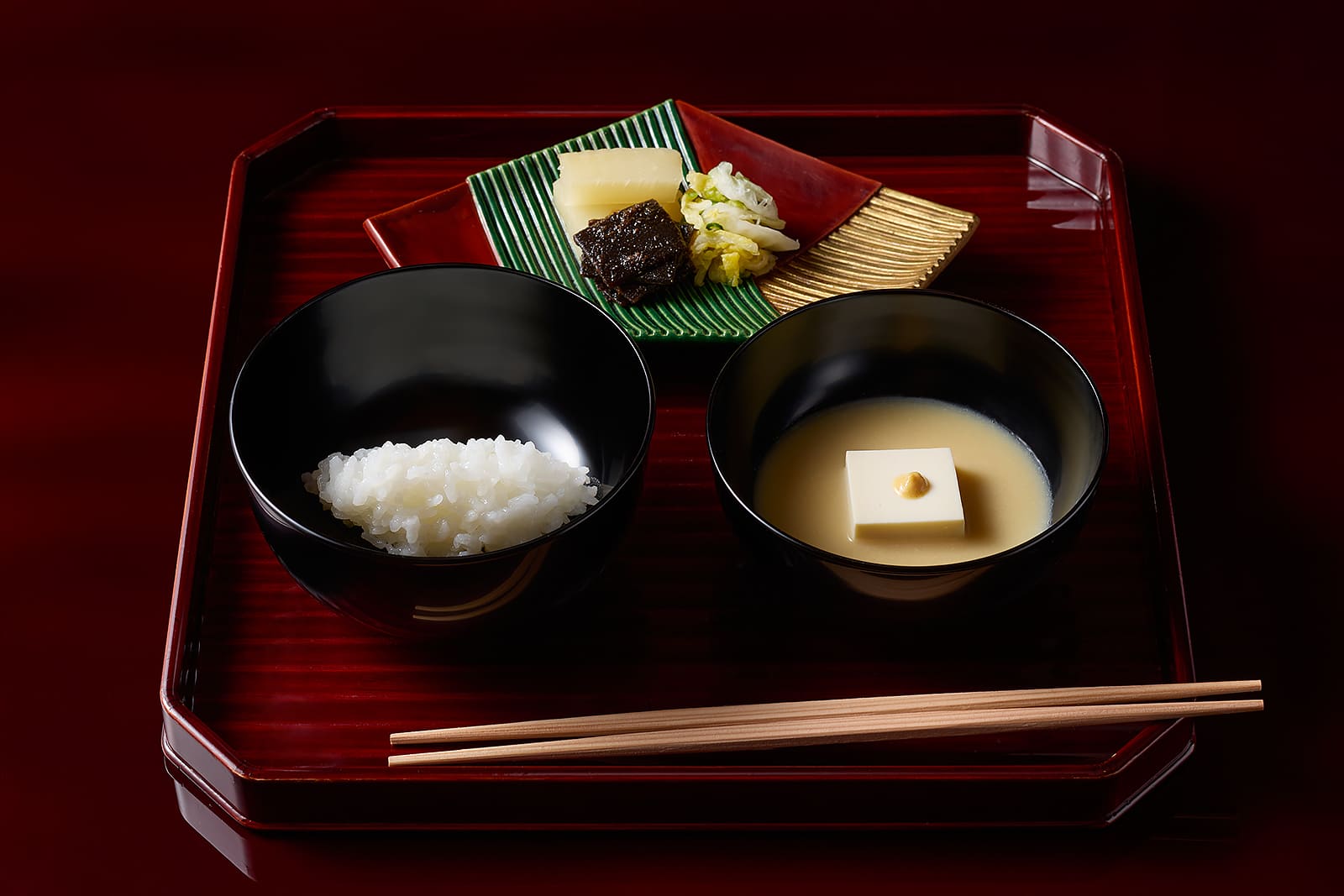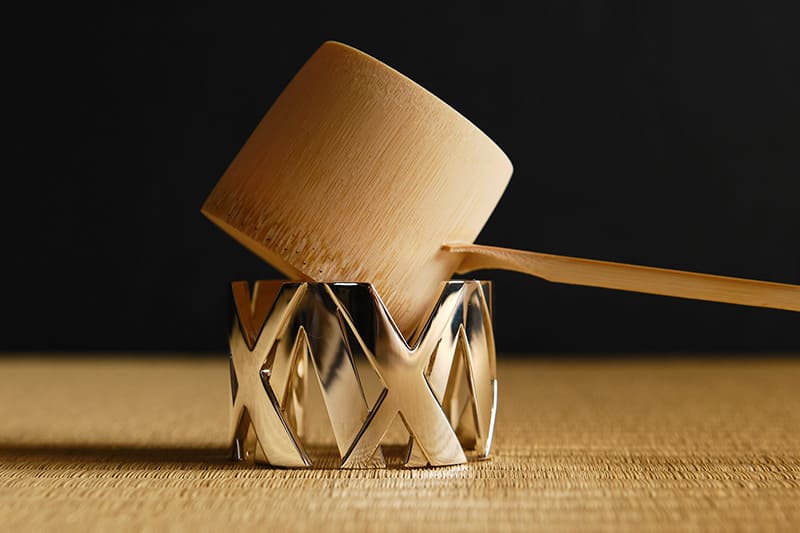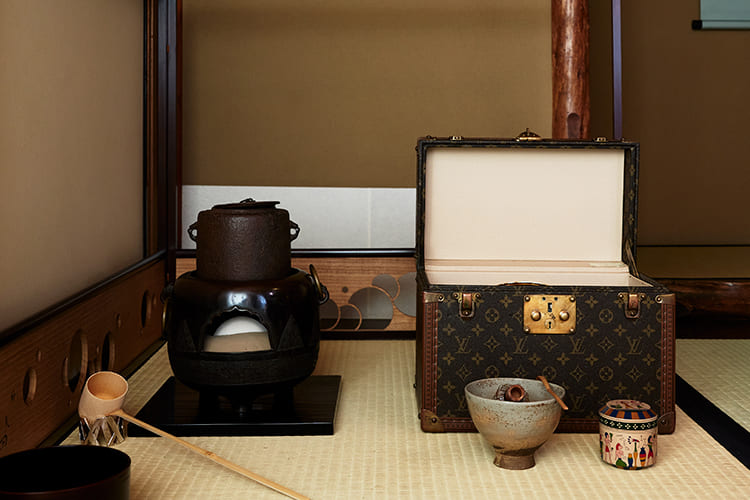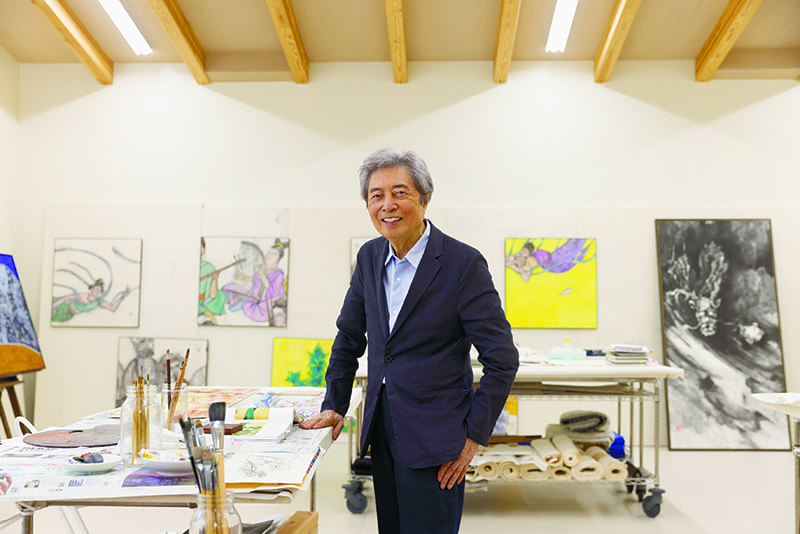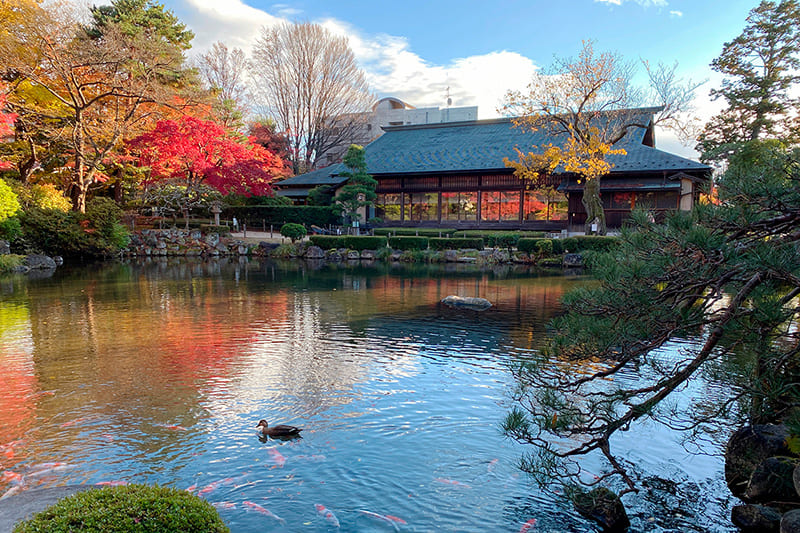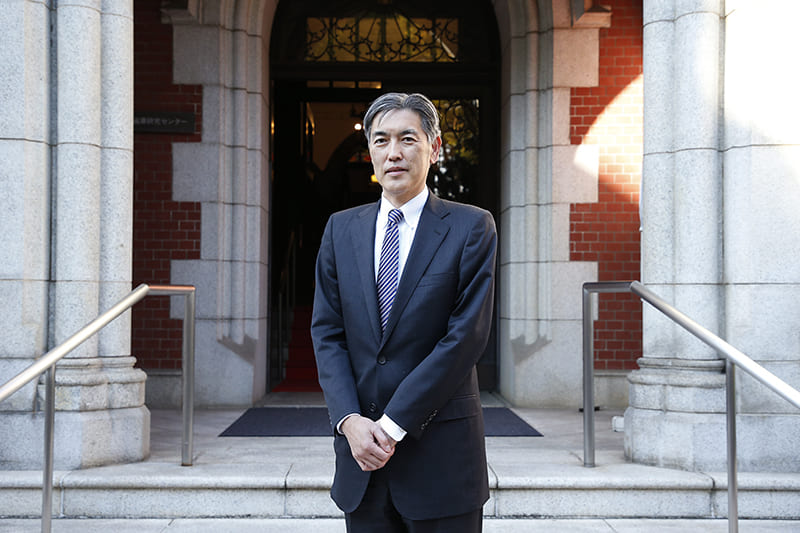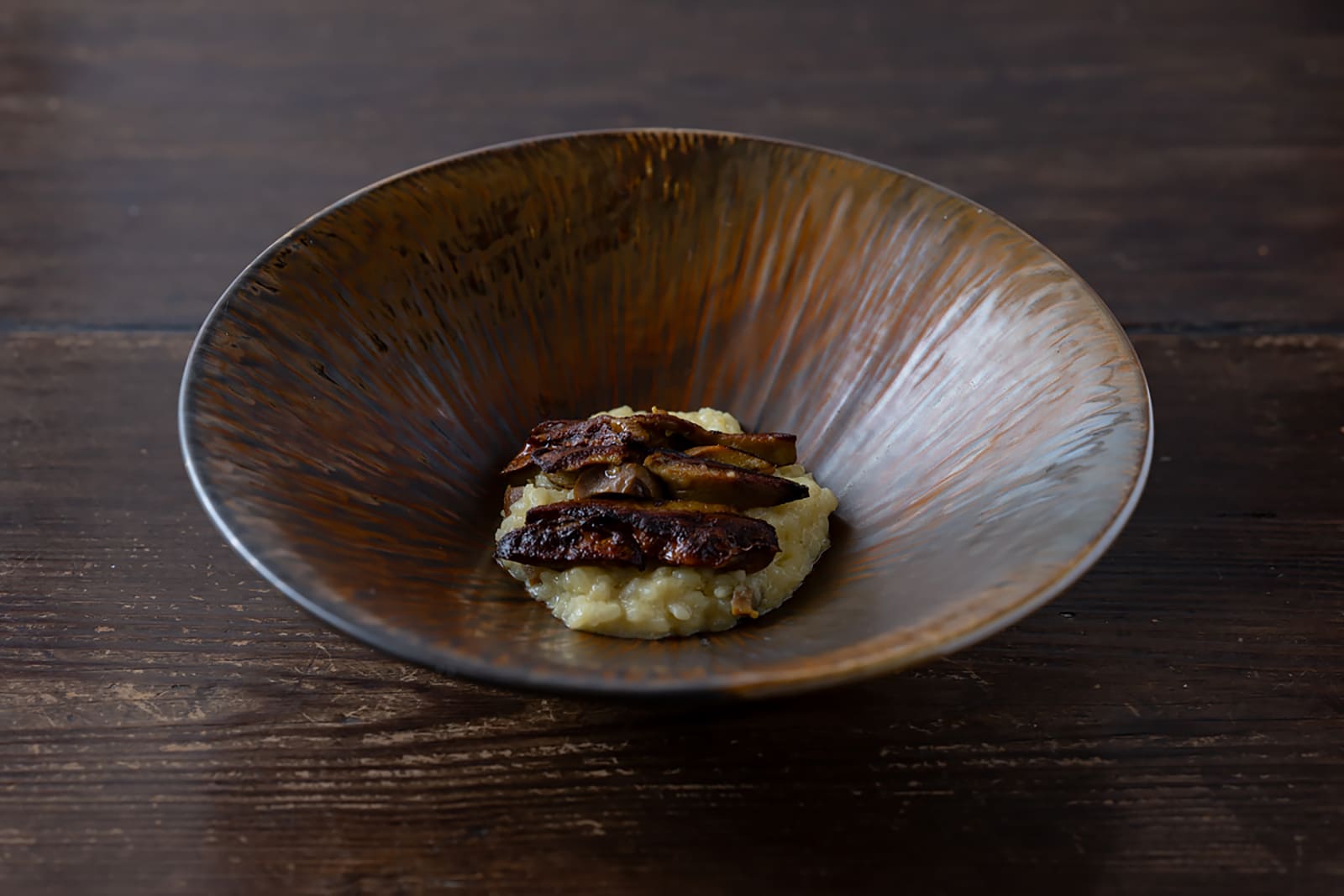October 24, 2025
High-end restaurants’ traditional craft tableware
DISHES
Casual visitors to Japan might not realize it, but formal Japanese restaurants are one of the best ways to experience a wide variety of traditional crafts. This is because these establishments make use of artisanal crafts from all over Japan — from the noren curtains hanging in the entranceways, to the room fittings and furnishings, the proprietress’s kimono and the tableware on which the food is served.
The roots of high-end Japanese cuisine lie in the formal kaiseki meal that precedes a tea ceremony. Consequently, many of the tableware items used are those long favored by tea masters. Designs often depict flowers, birds, the moon and the four seasons; creatures considered auspicious like cranes and turtles; patterns symbolizing longevity, good fortune and eternity; and motifs traditionally symbolizing the warding off of evil spirits. Cuisine is generally served using tableware from a variety of origins, artisans or styles to avoid duplication within a single course. While recognized masterpieces worthy of museum collections are extremely expensive and seldom appear on the market, reproductions of such pieces are common. At the restaurant Zeniya in Ishikawa Prefecture, reproductions are used frequently, yet these too are often precious, having been crafted by renowned artisans — leaders of their respective eras and regions. Lidded pieces often feature exquisite designs on the undersides of the lids, offering plenty to admire. After finishing a dish, you might discover a beautiful painting hidden on the surface. Bowls of warm soup are held in the hands. Let them touch your lips and then savor the experience of becoming one with the cuisine. That is the proper way to appreciate the essence of these traditional craft pieces.
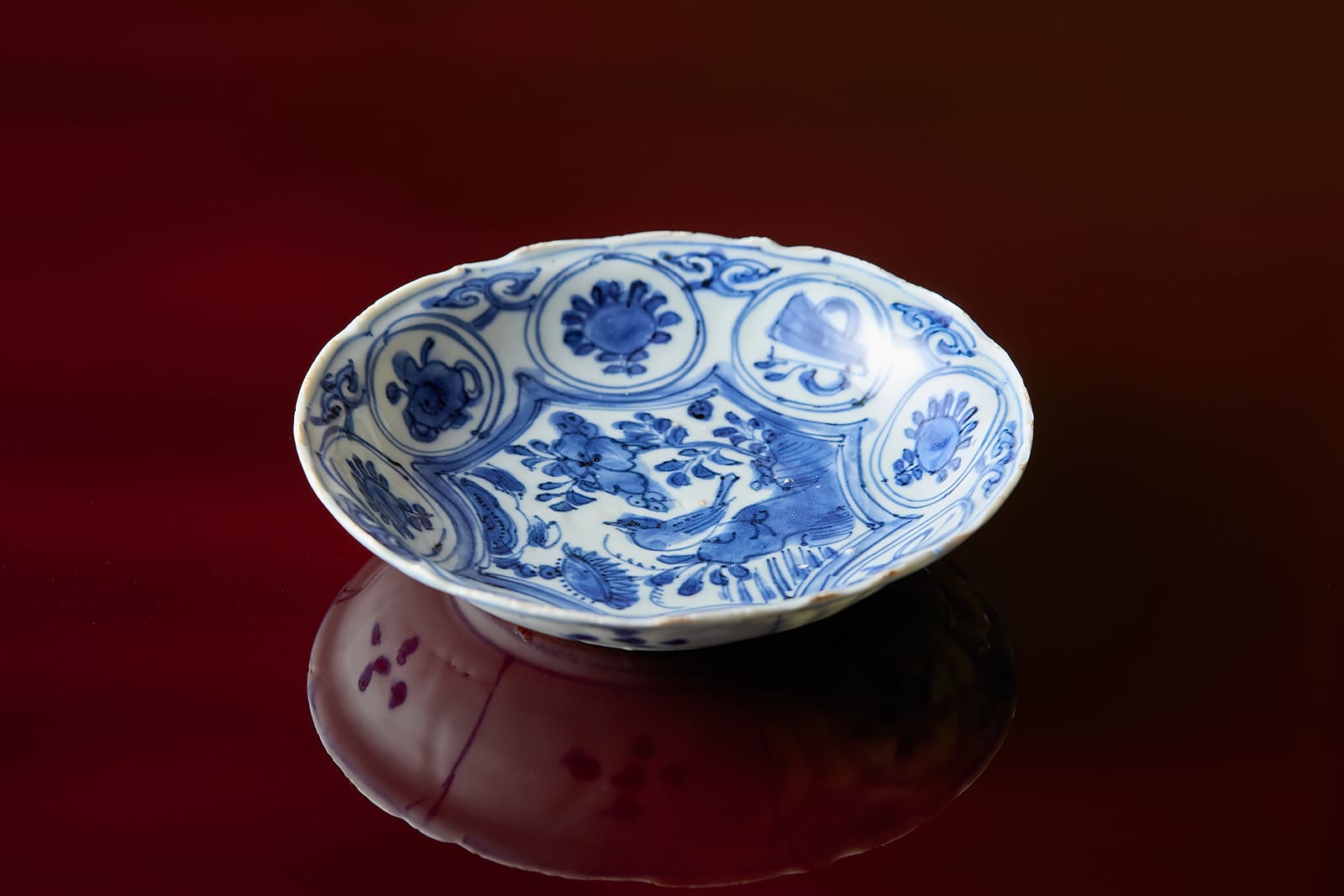
Though ko sometsuke pieces were originally made in China, many pieces exist that were based on the aesthetic sensibilities of the Japanese tea ceremony and handed down from generation to generation as Japanese treasures. These simple items were made at the unofficial kilns of Jingdezhen during the late Ming Dynasty (mid-17th century). Known as “blue-and-white” at the time, they were used as everyday utensils. Compared to items made in the imperial kilns of the day, they used coarse clay and had imperfect, free-form shapes and patterns that endeared them to Japanese tea masters, who sometimes commissioned custom-made pieces directly from the kilns.
PHOTOS: NAOFUMI MIYAJIMA
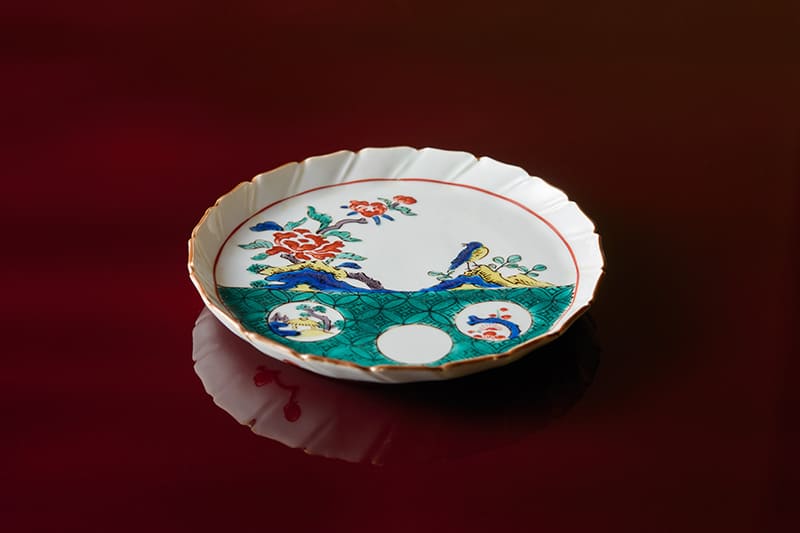
Kutani ware is a traditional colored porcelain from Ishikawa Prefecture. Its origins can be traced back to 1655, when Maeda Toshiharu, lord of the Daishoji domain (the present-day city of Kaga), a branch of the Kaga domain, ordered his samurai to study ceramics at Hizen Arita (the present-day Saga Prefecture town of Arita and its surrounding areas) and then had them start producing it themselves in a deliberate attempt to develop a local industry. Kutani ware is characterized by a vibrant and elegant glaze decoration that uses the so-called Kutani five colors: green, yellow, red, purple and ultramarine. The plate pictured is from the mid- to late Edo Period (1603-1868).
PHOTOS: NAOFUMI MIYAJIMA
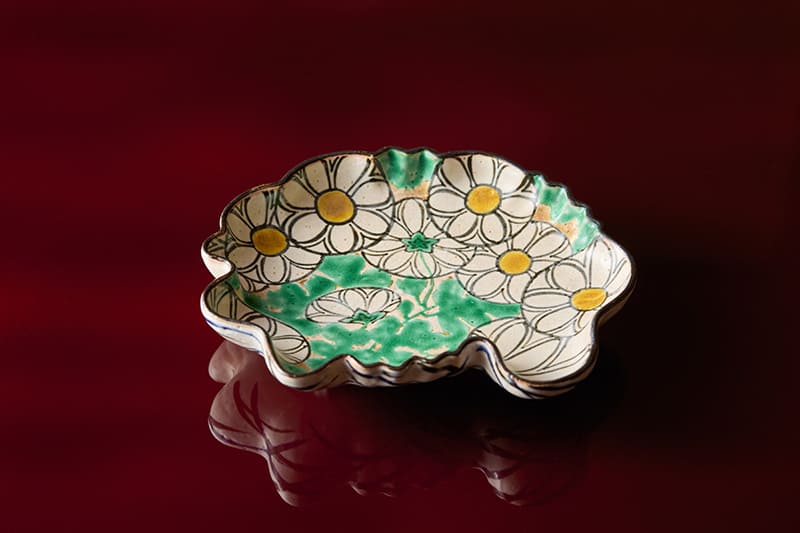
Pottery pieces made by reproducing the techniques and style of Kyoto-style potter and painter Ogata Kenzan, who was active from the late 17th century to mid-18th century, are extremely popular and still widely produced today. Characterized by vivid colors and pop designs, even a single Kenzan reproduction can immediately brighten and elevate an occasion. The photograph shows a chrysanthemum plate copied in the 20th century by Eiju Yaguchi, the first master craftsman of Kutani ware from Kanazawa, Ishikawa Prefecture.
PHOTOS: NAOFUMI MIYAJIMA
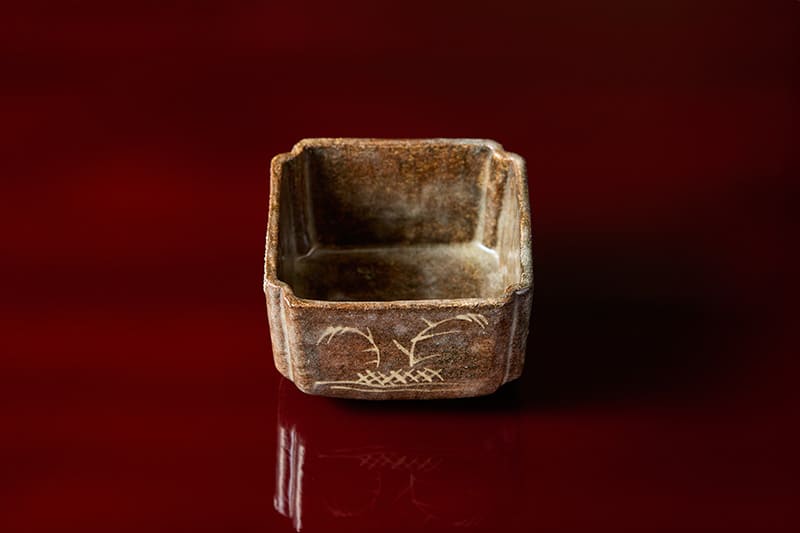
Pottery fired in Mino (present-day Gifu Prefecture) using white glaze, approximately 30 years before the start of the Edo Period. A Shino ware tea bowl bearing the signature “Umekake” is one of only two domestically produced tea bowls designated as National Treasures. The photograph shows a tsukemono (appetizer) dish made by the 12th-generation head of the Raku family in Kyoto, Hiroiri (his name after retirement), using Raku clay. It replicates Shino ware known as “nezumi Shino” (mouse Shino) due to its color, and depicts autumn grasses.
PHOTOS: NAOFUMI MIYAJIMA
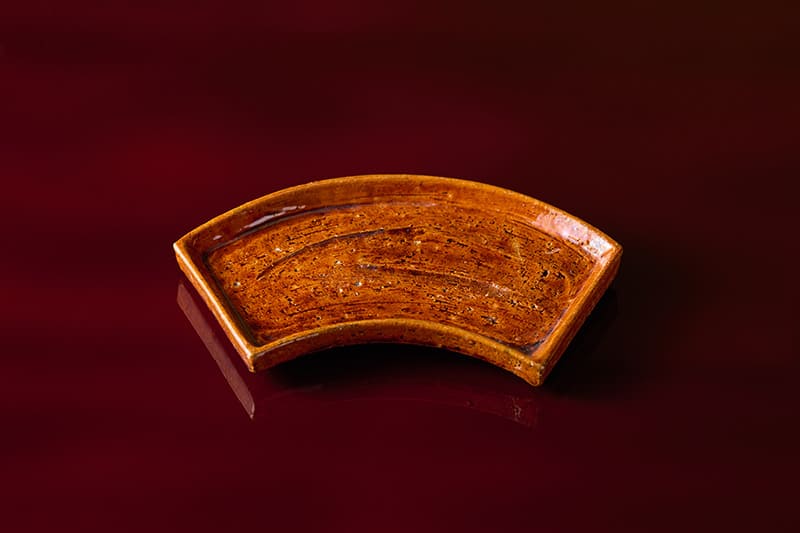
Ohi ware is one of Ishikawa Prefecture’s leading tea ceremony ceramics, originating in 1666 when the fifth lord of the Kaga domain, Maeda Tsunanori, invited Senso Soshitsu, the fourth head of the Urasenke school of tea ceremony, from Kyoto to Kanazawa. Accompanying him was the first-generation Chozaemon, a senior disciple of the fourth-generation Raku family master, Ichinyu (his name after retirement). Chozaemon began producing tea bowls and other pieces in Ohi, a village outside Kanazawa. The photograph shows a fan-shaped appetizer dish by the sixth-generation Chozaemon that is characterized by its lustrous brown ame-yū glaze.
PHOTOS: NAOFUMI MIYAJIMA
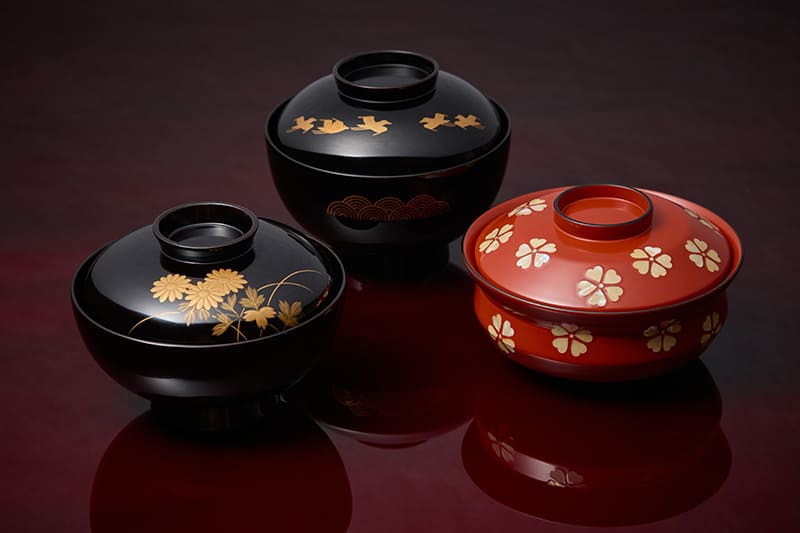
Lacquer coating is a technique dating back to the Jomon Period, with production areas spanning from Aomori Prefecture to Okinawa Prefecture. Among these, pieces crafted in Kyoto and Ishikawa prefectures, decorated with techniques like maki-e (applying gold or silver foil) or raden (inlaying mother-of-pearl) are renowned as high-end items. The bowls pictured, from the left: a Kyoto maki-e bowl with chrysanthemum designs, a Kaga maki-e bowl featuring a wave-and-seagull motif and a Wajima-nuri bowl with red lacquer and scattered mother-of-pearl flowers, a replica of a Meigetsu-wan bowl commissioned by a Sengoku warlord.
PHOTOS: NAOFUMI MIYAJIMA
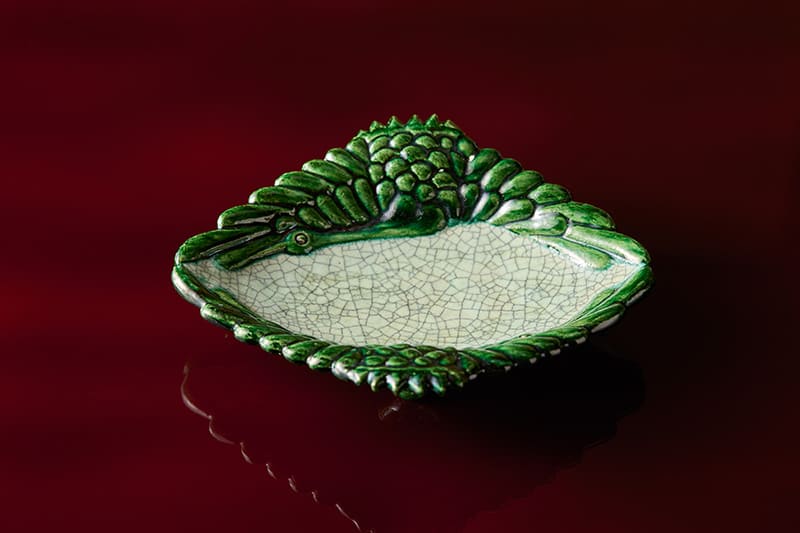
Raku ware traces its origins back to the late 16th century, when the potter Chojiro created the first Raku tea bowl at the direction of Sen no Rikyu, the man famous for perfecting the tea ceremony. Generations of heads of the Raku family in Kyoto have since taken the name Kichizaemon, producing primarily hand-formed tea bowls, as well as tableware for formal kaiseki restaurants. The photograph shows a vessel shaped auspiciously in the form of two facing cranes that was created by the 11th-generation master, Keinyu (the name he adopted after retiring). Its vivid green glaze is beautiful.
PHOTOS: NAOFUMI MIYAJIMA
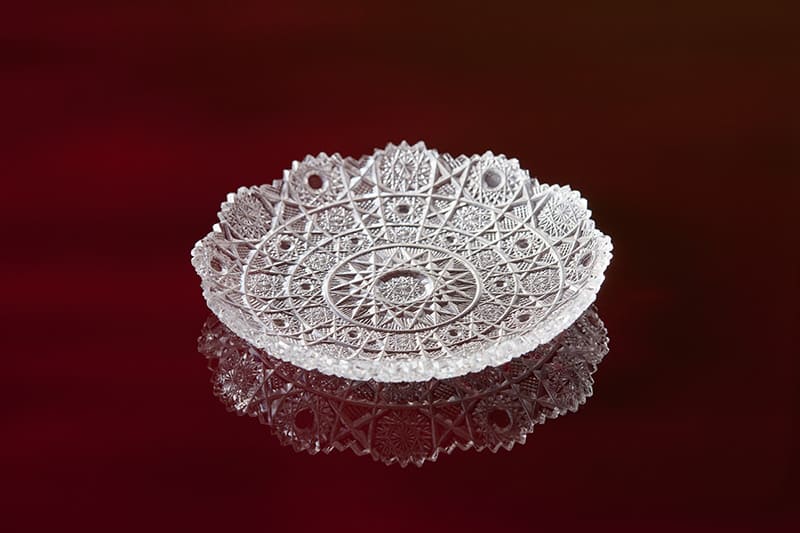
A general term for cut-glass products crafted in Edo (Tokyo) from the late Edo Period (around the 19th century) to the present day. It is said to have originated from applying cut-glass decoration to glassware imported from overseas. In addition to tableware, it includes daily necessities such as goldfish bowls. The plate pictured is a custom-made piece commissioned by the previous owner of the Japanese restaurant Zeniya, who had Edo kiriko artisans replicate the Bohemian design of a 19th-century cut-glass bowl.
PHOTOS: NAOFUMI MIYAJIMA
金沢市の料亭で出される新旧各地の伝統工芸の器。
海外から日本を訪れる人が、手軽に多種多彩な日本の伝統工芸品に触れられる場所として、日本料理店が挙げられる。暖簾に始まり、部屋の建具、女将の着物、器などに各地の伝統工芸品が使われているからだ。
高級な日本料理のルーツは茶懐石にあるため、使用される伝統工芸の器も昔から茶人に好まれてきたものが多い。意匠には四季の花鳥風月や吉祥文様、魔除けを意味する柄が選ばれる。基本的には、ひとつのコースで同種の器が重ならないよう、産地や作家、作風などを変えて料理を盛る。美術館に収蔵されるような名品には「写し」も多く、石川県金沢市の料亭『日本料理 銭屋』でも、写しが多用されるが、それらも名工による貴重なものばかりだ。
ふた裏にも見事な意匠が施されていることが多く、見どころ満載。食べ終わった後、底に美しい絵が隠れていたことに気づくこともあるだろう。そして、温かな汁を張ったお椀を手に取り、唇に触れて、料理と一体になった状態を堪能してほしい。それが伝統工芸品たる、正しい日本の器の味わい方なのだから。
Return to Sustainable Japan Magazine Vol. 53 article list page

